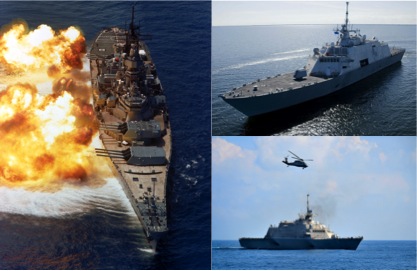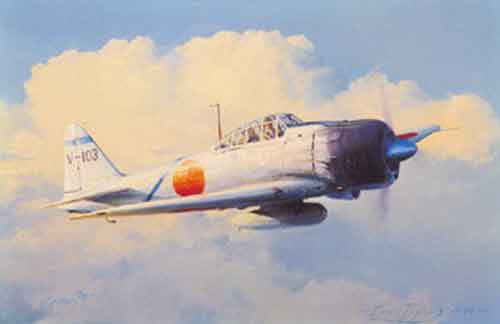Tit-for-Tat Weapons Procurement: You’re Doing it Wrong

Congressman Randy Forbes (R-Va) has delivered a letter to the Army Chief of Staff outlining the need for Army to develop and deploy long-range anti-ship missiles. Because China has:
Randy Forbes letter to Gen. Ray Odierno — 2014-10-10 by BreakingDefense
So much shallow analysis here and accompanying articles – one wonders where to start…
1. Be careful about discussing either re-opening the INF Treaty or abrogating it all together. The Russians are spoiling for the least little pretext to walk away from it and are likely poised for a breakout in MRBM/IRBM fielding – which would be a bad thing overall but especially for Europe (cf. l’affaire de SS-20). Oh and “breakout” – one of those Cold War terms, where another country suddenly fields a system (usually nuclear) in capabilities and quantity that leave a gap in terms of years before it can be adequately countered. Years which constitute a window of opportunity for mischief (at best) by the guy fielding the system to play the field. Precisely where we were in 1979 as Jimmy Carter fumbled around to find a workable deterrent to the SS-20 acceptable by Europe. Which begat the GLCM and more importantly the Pershing II deployments as part of the Two Track approach that was executed under Reagan. But times were different then because:
2. In 1979 we had a fairly robust industry (not as robust as the Soviets) insofar as battlefield BMs went – the Pershing II was already well under way for development and deployment. Today? Because of INF and a general stagnation in terms of long-range, sub-ICBM development as a result, we have…nada. But that might be moot because:
3. Where are you going to put these missiles? Guam? Japan? China has strategic depth and interior LOC’s to support and conceal a land-based *ground-mobile* ASBM which complicates counter-targeting. ‘Just kill the launchers’ you say? Given our (not so) stellar record in that very endeavor reaching all the way back to Operation CROSSBOW in WWII, plus the fact you’d be directly attacking a nuclear near peer — well, that requires some cogitation. Oh – and by concentrating a force like that on an island you are painting a nice big sign that says “strike me first.” But even that is somewhat irrelevant because:
4. What is your target? The Chinese ASBM is quite clearly meant to exercise control over the broad ocean areas in/around the 1st island chain and inside – as are their ASCM forces which are more numerous and dispersed. Also, clearly, it is meant for capitol ships. Just saying we will build a system to take out PLAN ships beggars the reality of real-time OTH-T and something the armed forces have had to deal with for sometime now – what will the ROE be to permit their use? Anyone remember OUTLAW SHARK? Bueller? Bueller?
So how about this. let’s set aside this silly talk of tit-for-tat ballistic missiles and instead focus on putting long-range (500km+), supersonic (Mach 2+), over-the-horizon ASCMs on our surface combatants and subs. All of them. Expand the target set. Sell them to our allies (if they haven’t already begun work). Make them capable of being launched from all variants of the F-35 such that F-35Bs off an America-class LHA can provide another layer of complexity to PLA leadership. Make the P-8 and B-1/B-52 compatible for carriage so that they can hangout outside of PLAAF/PLANAF fighter range and salvo missles at PLAN ships. heck, why not even give it a LACM capability too. Too much you say? Can’t be done you say? I know a few overseas firms that would argue otherwise.





I can see one reason to deploy some “mobile” army ship attack capability on our island bases – give the enemy more targets from which to choose. It might also provide some small measure of area denial around those installations, giving the enemy pause should they consider an incursion.
Other than that, waste of time. Most likely a waste of money regardless.
The cost/benefit tradeoffs of ballistic vs supersonic ASMs in a short range environment (<300km) tends to favor the ASCMs. As operational space factor grows, the ballistic missile helps redress that factor via time of flight, but requires a more robust OTH-T and/or salvo size plus terminal capabilities to be effective. And by definition, you are self-limiting the target area for the enemy when deploying a high value weapon system on an island. CDCM TELs are much easier to conceal/deploy to pre-surveyed sites than TELs supporting MRBMs. Of course, given INF treaty that is a moot point…
w/r SJS
I don’t get how the letter from the Congressman was immediately translated to: US Army needs its own DF-21.
If we restrict ourselves to INF compliant weapons, then there is a definite advantage for US Army mobile missile launchers. That may make the Chinese suffer the same difficulty that the US has, trying to suppress highly mobile long ranged missile launchers.
The missile should be sized to be F-35 capable and highly mobile from a land launcher. Heck, make it smaller than usual so that the launcher is as airlift mobile as possible.
There is another reason to like shore based missiles: It builds up the Army’s experience with tactical missiles so that when the INF treaty fails, the Army will have regained some of its competence in that area.
Arkaday:
To argue for Army involvement in the western Pacific via “ground-based ASM” is a specious argument from the start. First – if Army were involved it would have to be BM because USAF has GLCM responsibility per roles and missions (recall that with the deployment of the modernized INF in 1983-4 by the US, it was the Army Pershing II and the USAF GLCM). We also lack the budgetary maneuvering space to give Army the luxury of developing a niche “just in case”capability when there are greater needs out there. Finally, apropos Forbes’ statement about building a “land-based, anti-access/area denial (A2/AD) capability to support a counter-A2/AD capability in the Western Pacific” misses the point on a number of levels with its symmetric response which lacks a fundamental understanding of China’s A2/AD approach and the many systems used to implement it, and specifically, the roles of the PLA(N), PLA(AF) and PLA-2nd Army. The bottomline to countering the Chinese A2/AD is that the operational factors of time, space and force all point to the need for mobile forces – primarily naval supported by air (sea- and land-based), that are able to use their inherent mobility and operational maneuver to complicate A2AD targeting while employing long-range missiles – ASCMs, AAMs and SLCMs; along with a variety of non-kinetic means to confuse, confound, delay, deny and ultimately destroy its ability to target and attack our forces. w/r, SJS